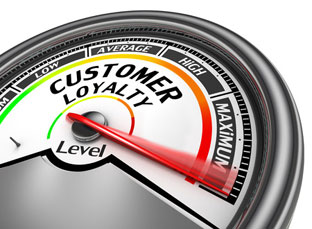Loyalty programmes have become a commodity to the extent that some form of a rewards programme has almost become a business-as-usual engagement between customers and their brands.
By placing the customer at the centre of your organisational universe, you will naturally build a deeper engagement which ultimately results in lasting loyalty to your brand. This may sound like stating the obvious, but many organisations fail to achieve this. The argument made by many organisational leaders is that the sheer volume of customers makes it near impossible to treat every customer at the individual level. However, each customer’s needs are different and, if personalised needs can be considered and tapped into, immense brand loyalty can be unlocked.
Seven pillars of customer centricity are proposed by the TM Forum in a market research report entitled “Enterprise Customers: The virtuous circle of loyalty” to form the distinctive characteristics of a customer-centric organisation.

Philip Stander, MD of Globetom
Globetom has published a white paper entitled “Loyalty Programmes as a Customer Centricity Aid”. The publication provides the connection between loyalty platforms and programmes in support of the TM Forum’s seven pillars of customer centricity. While the article has a communications service provider focus, the White Paper may be equally applicable to other industry verticals. The publication introduces the reference architecture of a modern loyalty platform as well as the role of a standards-based, RESTful Web Service API to drive loyalty programme management.
A summary of the exploration of the White Paper, using the seven pillars of customer-centric organisations, are:
1. An outside-in, solutions-oriented approach
While the trait of customer-centric organisations must be culturally entrenched, a sound loyalty programme can form a significant technology capability to achieve a solutions-oriented approach.
A loyalty programme can be utilised to deliver information that enables an outside-in view of your business. Imagine a solution for business analysts that provides a continuous dimensioning of customer problem areas, customer sentiment of the quality of the solutions offered and the turnaround time from problem-lodging to resolution.
2. A deep understanding of the customer across the lifecycle
Developing a holistic view of individual customer’s interactions and experiences over time of their relationship is an exceptionally important part of being a customer-centric company.
Failing to understand where the customer is in their life cycle can distance them from their association with a brand. Moreover, providing ill-fitting promotions and offers can cause more damage to the organisation compared to no communication.
With the application of a loyalty programme, customer life cycle behavioural attributes are accumulated and stored in member profiles. When this data is referenced appropriately, more efficient targeted promotions can be implemented.
3. Empowerment at the point of interaction
While customer relationship management (CRM) platforms are increasingly used as a single version of the truth with regards to customer profiling, a loyalty programme and the information generated as loyalty execution points (transaction journals) can complement a 360° view of customers at the point of contact. If CRM platforms are integrated with a loyalty platform, a complete customer profile at the point of contact can be presented.
4. Cross-company consistency
Consistency across a company’s product and service portfolio are equally important when building and maintaining loyalty programmes. A business customer may be using a variety of services from a diversified company. Running loyalty programmes in silos can easily lead to cross-company inconsistencies and fragmented availability of loyalty benefits. Any customer would want loyalty benefits to accrue across all services to a single, consolidated benefit-pool.
5. Efficient, tailored business processes
An efficient loyalty programme rewards customers in one of three ways: through loyalty points earnings, benefits with coalition partners and rewarding customers with special offers created as customer orders.
Applying the correct reward actions requires extensive planning, business process understanding and optimisation as the delivery of these benefits become an integral part of service delivery. Inefficient business processes and poor management for loyalty benefit delivery results in a poor customer experience, reduced brand loyalty and a high earn-to-burn ratio which increases loyalty benefits as a liability.
6. Transparency
If customers are going to be rewarded for positive behaviour and upping spend with your brand, then these earnings also need to be transparent. As loyalty earnings is a liability on your books, points earn and burn events must be measurable at a transactional level in any event. Organisations adopting loyalty programmes must have the confidence to provide detailed earnings statements to their members on demand, thereby increasing transparency and trust.
7. Data-driven decisions
Effective measurement of customer behaviour is the foundation of creating lasting relationships with your customers.
A loyalty programme rewards desired customer behaviour in the endeavour to move them up the spending band with your business. Analysing desirable customer interactions and loyalty programmes based on these exchanges can be done through a big data analytics engine. Analysts obtain a rich, structured data set from the loyalty engine to enrich the organisational ability to drive intelligent, data-driven decisions. A loyalty programme gives organisations a position of privilege in that the enrolling customers contribute to the measurement of behaviour to ultimately reward positive engagement. The right for deeper measurement of customer behaviour, therefore, unlocks the key to improved customer understanding resulting in better customer management.
Loyalty programmes and a sound loyalty platform technology enables organisations to gather customer behavioural data through a closer engagement model against the incentive of loyalty benefits. This data can, therefore, be turned into powerful information that can help companies achieve the organisational behaviour and culture that constitutes a customer-centric business.
About Globetom
Globetom helps businesses build, deploy and monetise services in the cloud. Globetom's core areas of competency include loyalty, voucher management, prepaid management and distribution, enterprise middleware, a SOA application and Internet-of-things event-processing. Globetom's experience in the telecommunications industry includes BSS and OSS products and solutions. Globetom specialises in the area of service fulfillment, assurance and billing solutions and uses service-oriented architecture principles to build future-proof solutions for its customers. Globetom is a member of TM Forum. For further information see: www.globetom.com.






































